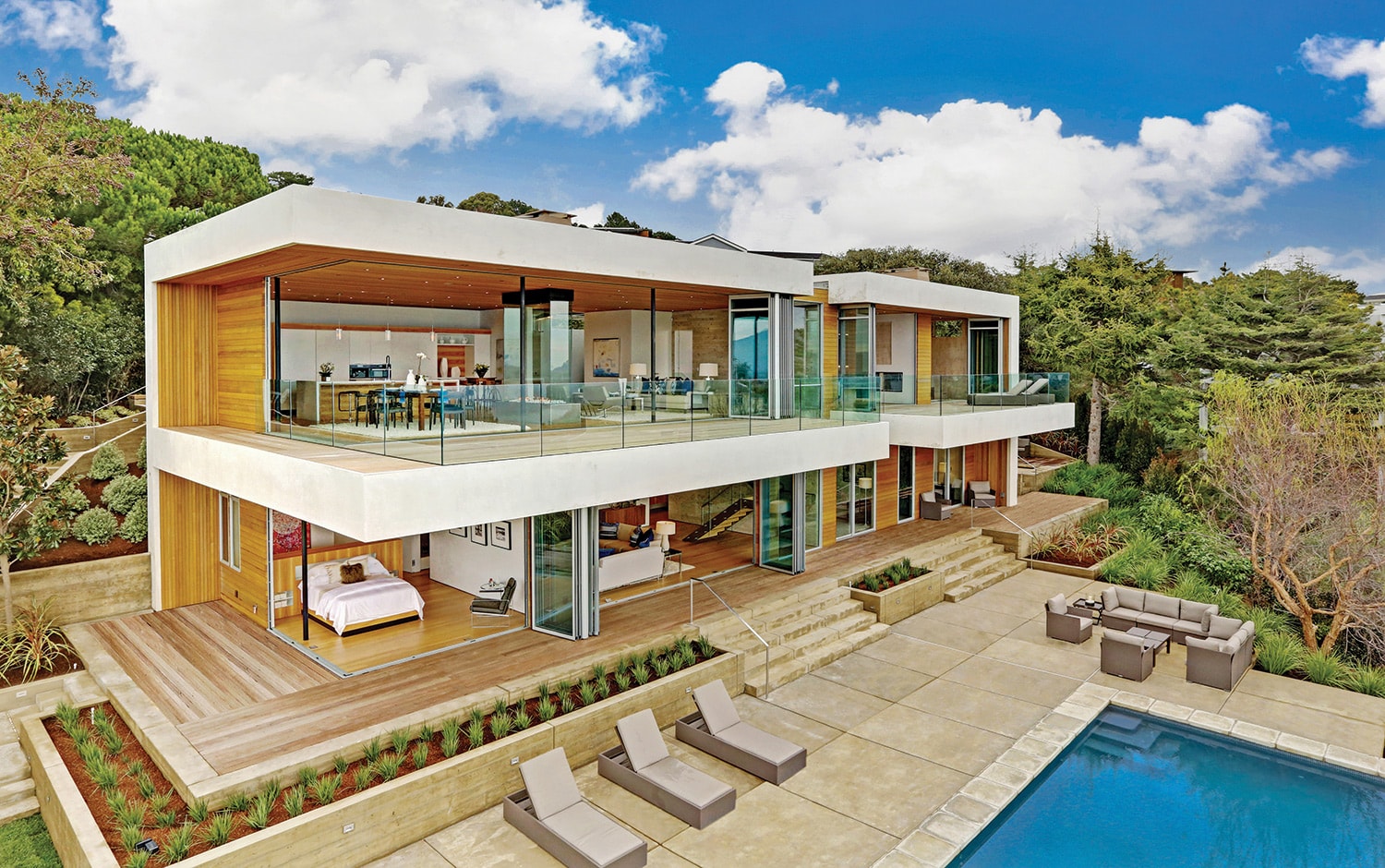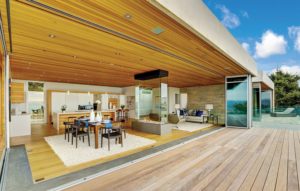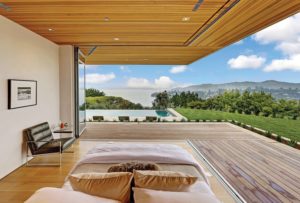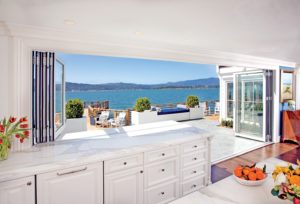
09 May Illuminations: Artist Spotlights
NanaWall seeks to redefine the category of large, sliding glass walls. During its 30 years in business, the California-based company has worked with architects, builders, design professionals and homeowners to reimagine how buildings, people and the elements interact. By combining precision engineering and different designs, the company offers sleek, sliding glass walls for almost any space.

The great room revolves around a floor-to-ceiling fireplace housed completely in glass.
“It’s used in a couple of different ways,” Matt Thomas, marketing manager, says. “In a residential home, the walls change the way people view the home, creating an indoor-outdoor lifestyle. … It’s a very wide opening, and the panels park away so they are not visible at all.”

Both the master bath and sleeping quarters in this Tiburon, California, home open to the south-facing deck and yard with views of the bay beyond.
Take, for example, the NanaWall application on a renovated, single-story ranch house built in 1959 in Tiburon, California. With the help of the expansive sliding glass system, it is now a unique property with stunning views of the San Francisco Bay, the Golden Gate Bridge and Mount Tamalpais. The 11-foot glass walls on each level ensure these views are a central feature and allow the homeowners to take full advantage of the mild climate.
Architect David Kotzebue designed the cantilevered house in concert with Amalfi Construction owners Jacquie and Lowell Strauss. Kotzebue’s design includes a support brace on the southwest corner of both levels. The result feels like the ceiling is suspended in air. Without visible headers and framing, the roof appears weightless.
“We find out what the requirements are and often make suggestions,” Thomas says. “The system can allow very tall panels for especially fantastic views.”

NanaWall transformed this kitchen in Santa Rosa, California, by removing barriers and bringing sights, sounds and fresh air into the space; ideal for indoor-outdoor dining experiences.
NanaWall has four configurations of glass walls, each with variations for specific environments: folding, sliding, frameless and the newest system — a large, minimally framed, sliding glass panel with recessed top and bottom tracks for a picture-frame effect.
“The most unusual configuration I’ve seen is when the panels are parked around the side of a building so the glass is curved,” Thomas says. “We also have a home that created a zigzag. When they’re closed, they look like a ‘W’ from the top down.”
Another interesting use for NanaWall products is in the kitchen. The company can create a system that allows for indoor-outdoor cooking and entertaining. A glass wall bisects an elongated kitchen countertop. When folded away, the kitchen is open to the outdoors, offering expanded counter space for entertaining, food preparation and visiting with guests on the patio. Thomas explains that they use the folding and single-track system to achieve the effect.
When any NanaWall system is closed, the energy efficient design keeps the cold outside while maintaining comfort inside. Thomas explains that the specialized seals and panels provide superior wind and rain resistance and keeps wind-driven water from entering the home — all the while performing the seemingly magical feat of letting the outdoors become a part of the home’s environment.






No Comments